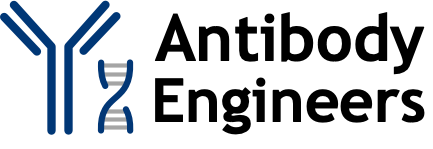Evaluating the potential for immune escape: how likely is an antibody to protect against a specific SARS-CoV-2 variant?
Author(s): Sandra Porter1, Uwe Hilgert2, Erica Lannan3, Michelle Stieber4
1. Digital World Biology 2. Bio5 Institute 3. Prairie State College 4. Cerritos College
1729 total view(s), 1452 download(s)
CDC info 5_3_2022.xlsx(XLSX | 12 KB)
Commercial Anti-SARS Antibodies.xlsx(XLSX | 15 KB)
Instructor Guide Antibody protection against SARS-CoV-2.docx(DOCX | 22 KB)
Intro Student Antibody protection against SARS-CoV-2.docx(DOCX | 20 KB)
Part_1 Changing shape data.docx(DOCX | 26 KB)
Part_1 Changing shape SARs-CoV-2 spike.docx(DOCX | 867 KB)
Part_2 Finding aligning data.docx(DOCX | 28 KB)
Part_2 Finding aligning structures.docx(DOCX | 1 MB)
Part_3 Amino acid contacts data.docx(DOCX | 27 KB)
Part_3 Amino acid contacts.docx(DOCX | 605 KB)
Part_4 NextStrain.docx(DOCX | 3 MB)
Part_4 NextStrain_data.docx(DOCX | 29 KB)
Part_5 Predict effects data.docx(DOCX | 96 KB)
Part_5 Predict effects of spike mutations.docx(DOCX | 2 MB)
- https://NextStrain.org
- National Center for Biotechnology Information
- SARS CoV 2 variants vs Antibodies - YouTube
- iCn3D: Web-based 3D Structure Viewer
SARS-CoV-2 Abs vs Variants Feb2022.pptx(PPTX | 18 MB)
- License terms
Description
This resource contains the following items:
1. A spreadsheet with information for molecular structure models for ten different commercial antibodies. One of these antibodies is used as an example in the video and the instructions. Each structure is accompanied by the PDB ID, the name of antibody, the name of the drug, and notes about it's effectiveness against different variants.
2. A spreadsheet with information from the CDC about the effectiveness of different antibodies against different variants as of May 3, 2022.
3. An Instructor guide that describes all the parts of the activity and discusses how an instructor would assign different antibodies to students and have them carry out the research project.
4. A Student guide describing different parts of the activity.
There are five parts to the activity. The first three are optional and last two parts are the main research project. The optional parts (1, 2, and 3) describe how students can compare conformations of the spike protein receptor binding domain (part 1), find aligned models from different structures (part 2), and identify a protein binding site (part 3).
The research component consists of finding a protein sequence from a variant (part 4) and comparing that sequence to an older version of the spike protein to evaluate how mutations may impact antibody binding (part 5).
Each part is accompanied by a sheet for recording experimental data. The data sheets also make it easier for an instructor to assess the quality of the work because students have some guidance concerning the type of information that needs to recorded.
Lastly, a PowerPoint presentation is provided that goes through the research project and a video that illustrates the technical components.
This work was funded by the National Science Foundation under Grant No. (DUE 2055036). Any opinions, findings, and conclusions or recommendations expressed in this material are those of the author(s) and do not necessarily reflect the views of the National Science Foundation.
Cite this work
Researchers should cite this work as follows:
- Porter, S., Hilgert, U., Lannan, E., Stieber, M. (2022). Evaluating the potential for immune escape: how likely is an antibody to protect against a specific SARS-CoV-2 variant?. Antibody Engineering, QUBES Educational Resources. doi:10.25334/82D0-AT65
